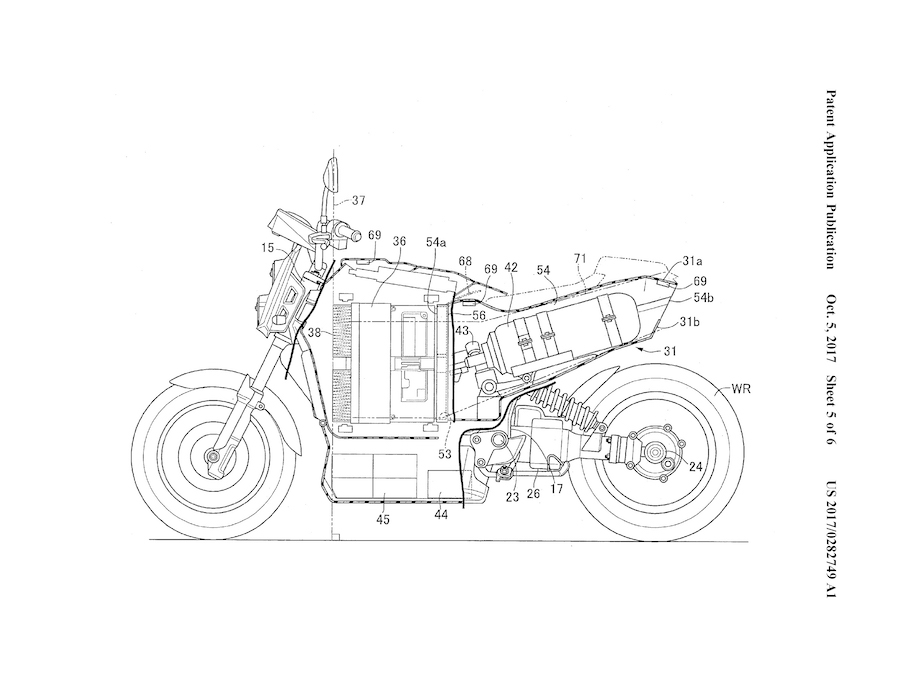But as we head towards an electrically powered future, there’s the question of whether the new bikes will stick to the familiar idea of batteries to store their energy, or if they’ll opt instead for hydrogen fuel cells.
Batteries have a huge head start; we’re all comfortable with the idea of plugging in and charging up, and every commercially available electric bike on the market uses them.
But batteries have two drawbacks. One is the charging process – it’s slow and there’s a hurdle in creating the infrastructure needed to make it convenient to recharge large numbers of cars and bikes across entire nations. Their second drawback is they’re heavy and nowhere near as power-dense as a tank of petrol.
Hydrogen fuel cells address both issues, and a new patent application shows Honda has developed a fuel-cell-powered electric bike. The firm is hedging its bets, as it’s also invested in battery-powered electric bikes.

Fuel cells create electricity using a chemical reaction between hydrogen and oxygen. The exhaust is pure water, refuelling is fast, and while a battery is heavy because it contains the chemicals needed to create its own electricity-producing reaction, fuel cells draw oxygen from the air rather than carrying their own.
Although Honda showed its own fuel-cell concept scooter back in 2005, the new patent shows a more convincing design. There’s a hydrogen tank under the seat while the front end of the machine contains the fuel cell itself. A back-up battery and electronic control box sit underneath it in the bellypan, while the electric motor is built into the swingarm, driving the rear wheel via a shaft.

By Ben Purvis











